These curlews performed some intense and protracted courtship displays that were fascinating to watch and photograph.
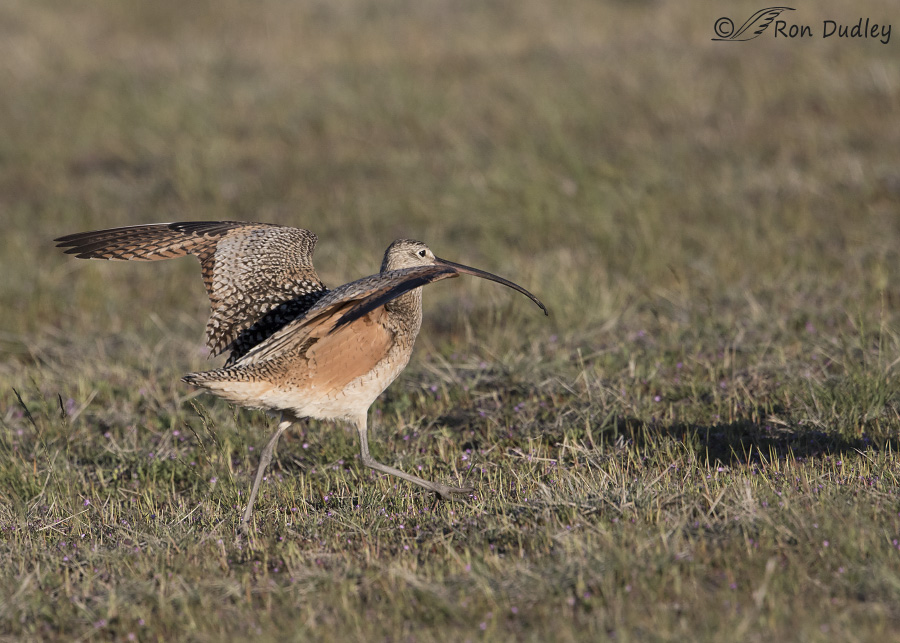
A male and female were feeding in the grasses eleven days ago on Antelope Island. They were some distance apart when suddenly the behavior of the male changed dramatically. He raised his wings and ran toward the female whose shadow we see here on the right.
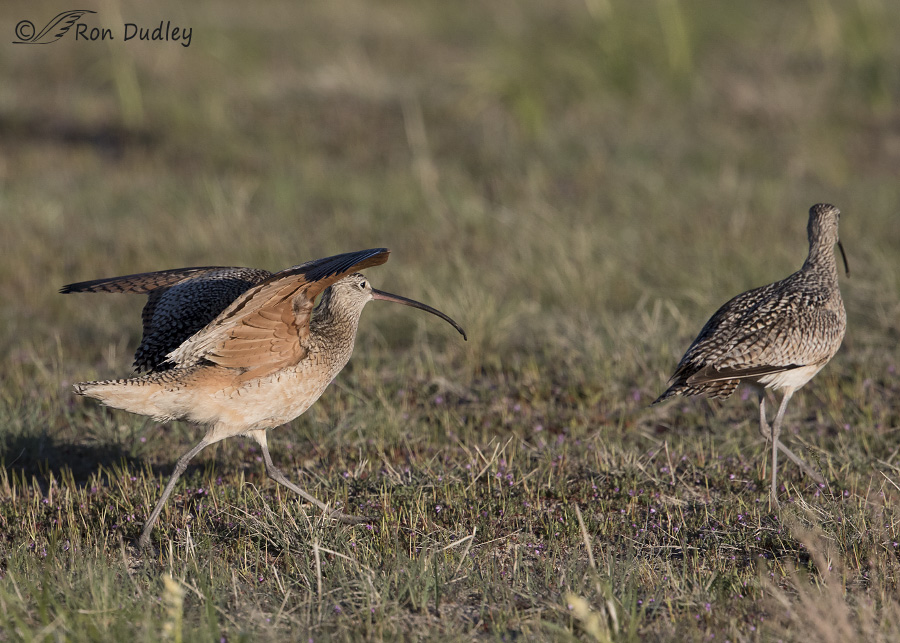
The female seemed indifferent to his approach. She obviously knew he was coming but she turned her back and slowly walked away.
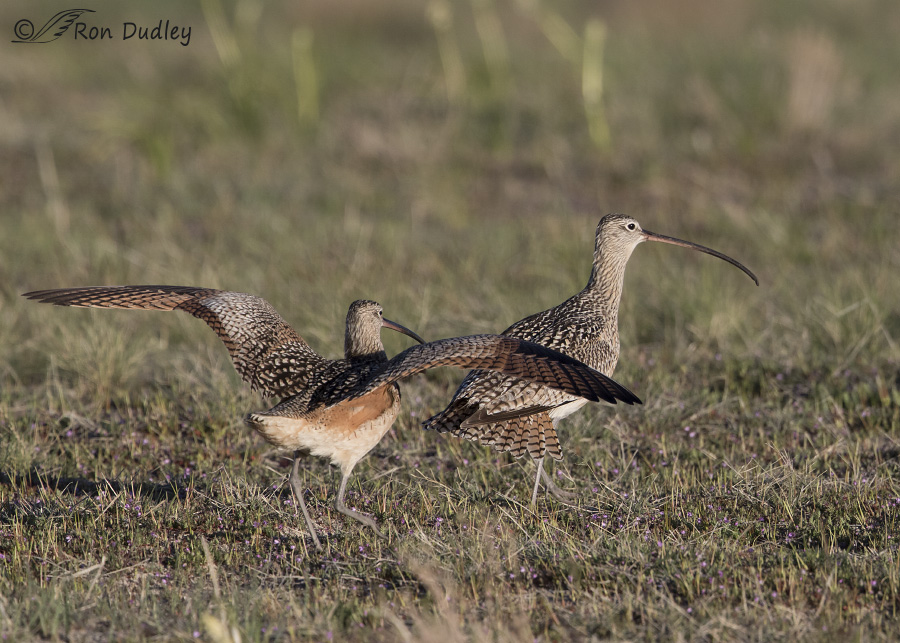
As he got closer she displayed to him with her tail. I don’t know if that was a sign of encouragement, or warning or something else altogether.
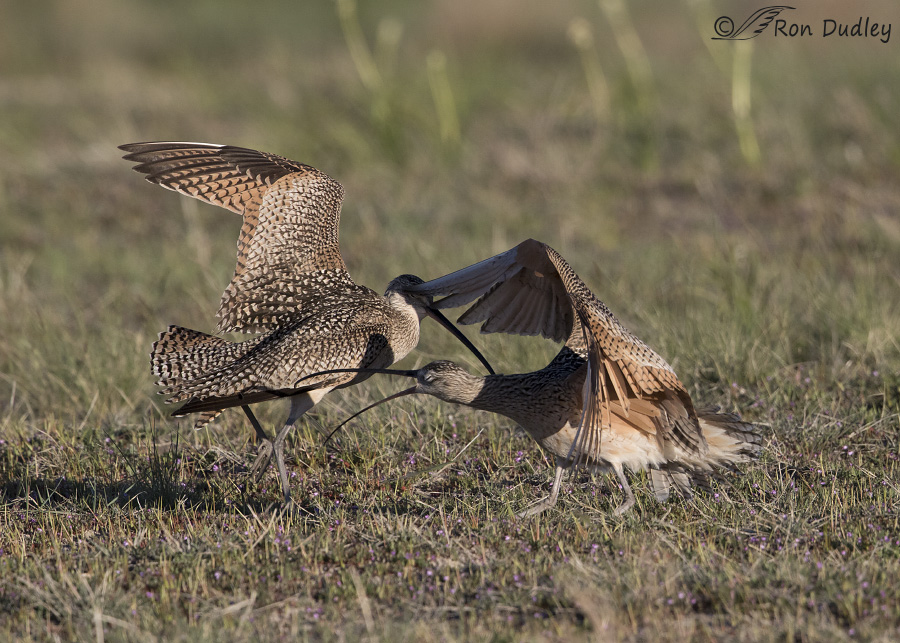
Suddenly she turned and attacked him and they duked it out for a few moments.
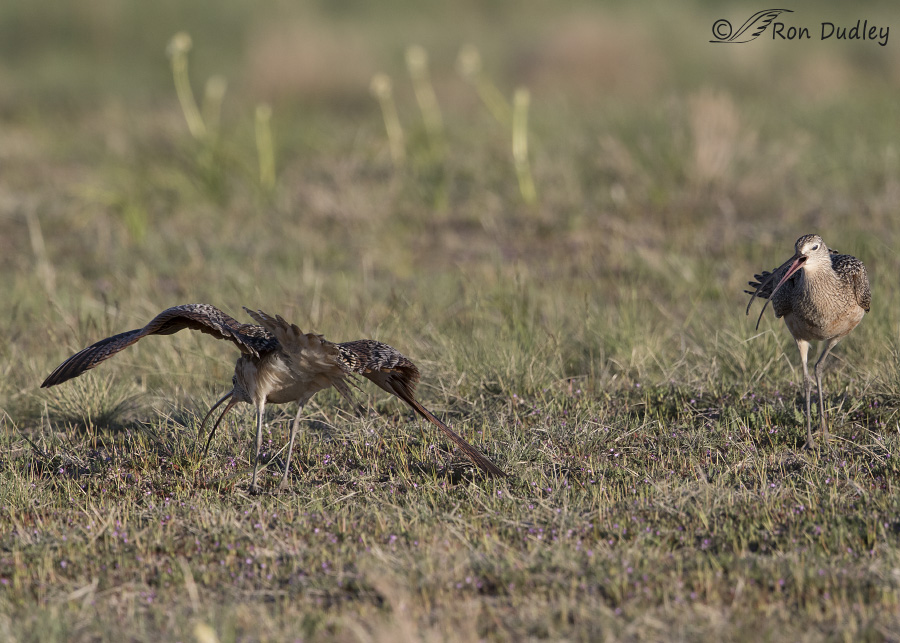
They separated briefly and the male displayed and called as she scolded him.
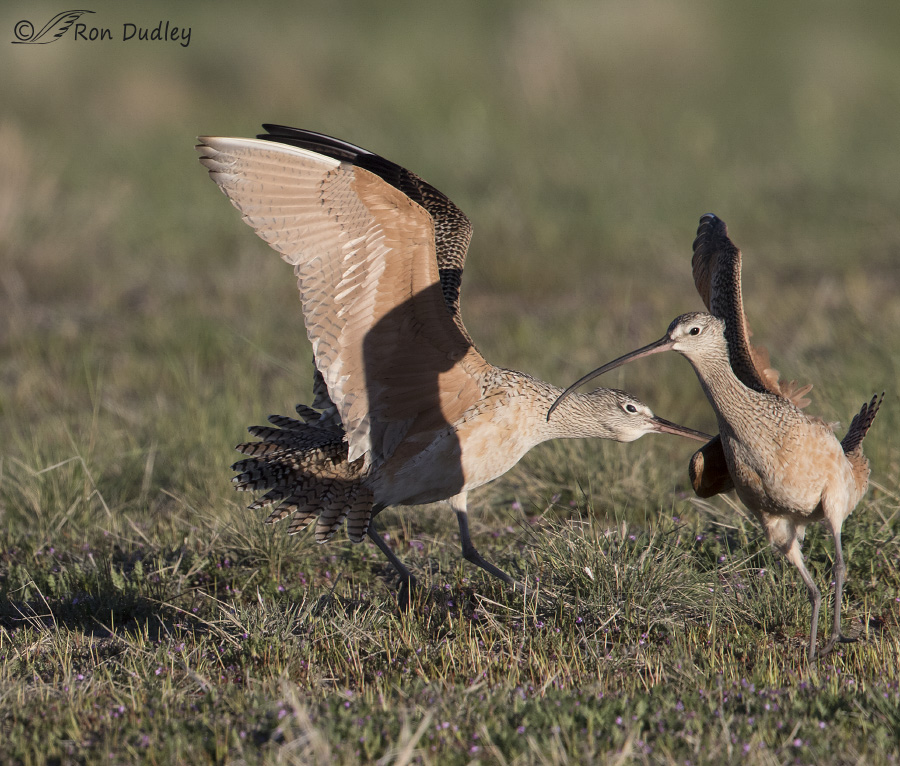
When the male pursued her again another scuffle broke out.
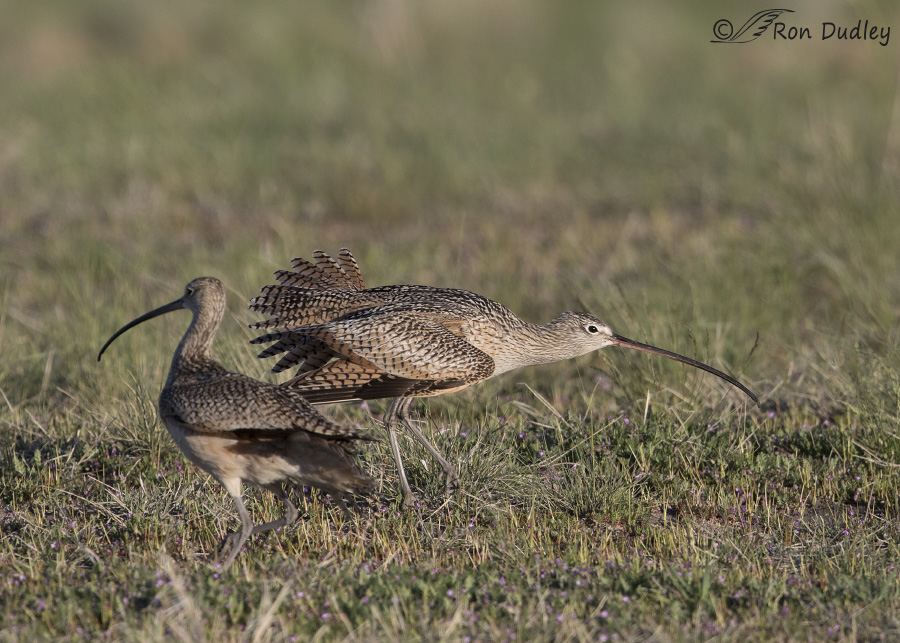
I wish I knew what this display from the female meant but after this there was no more fighting.
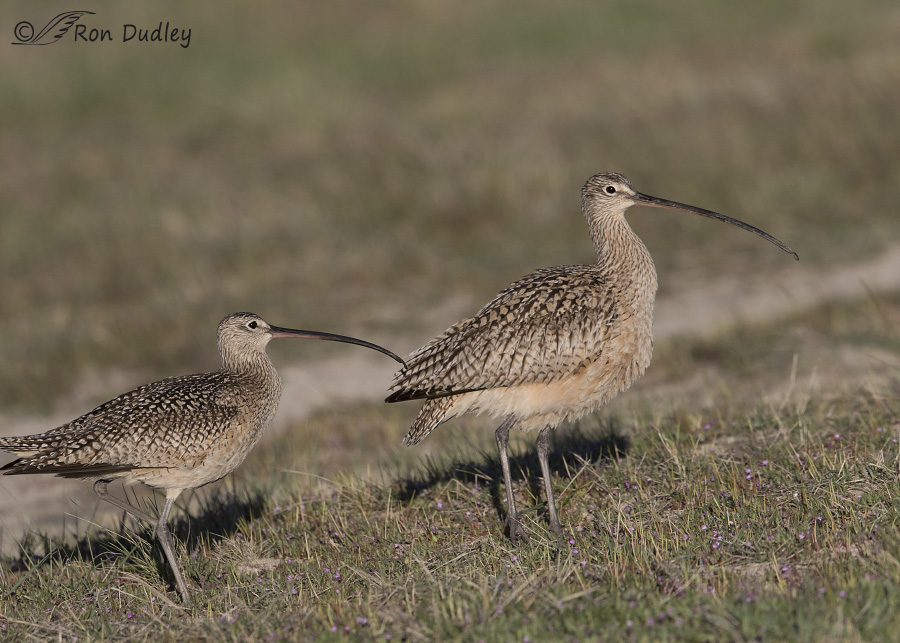
The two curlews walked some distance with the male following the female and then she stopped and assumed this warm and fuzzy posture which made me wonder if her mood had changed. Note the slightly longer bill and larger size of the female.
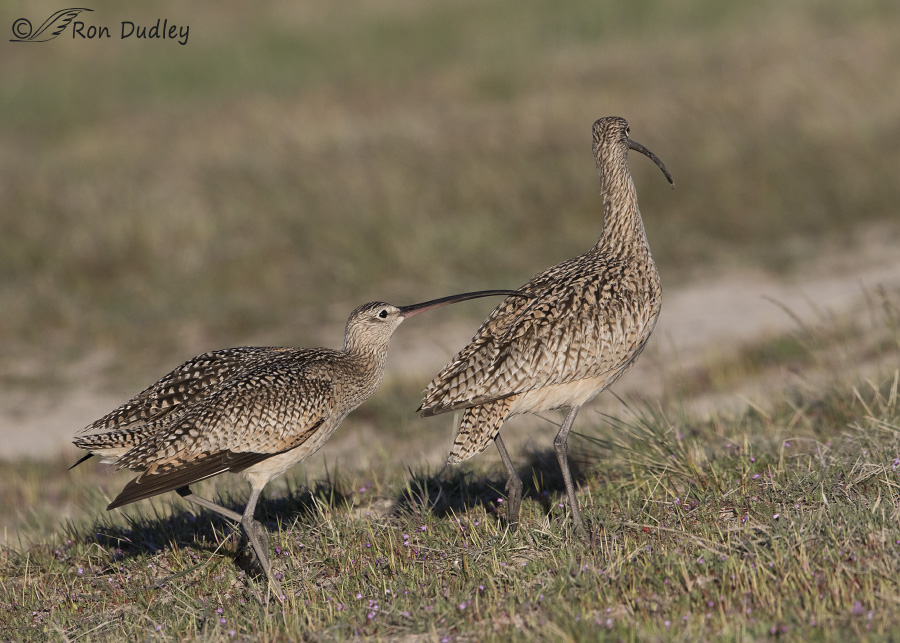
Then the male began to stroke her back with the tip of his long bill.
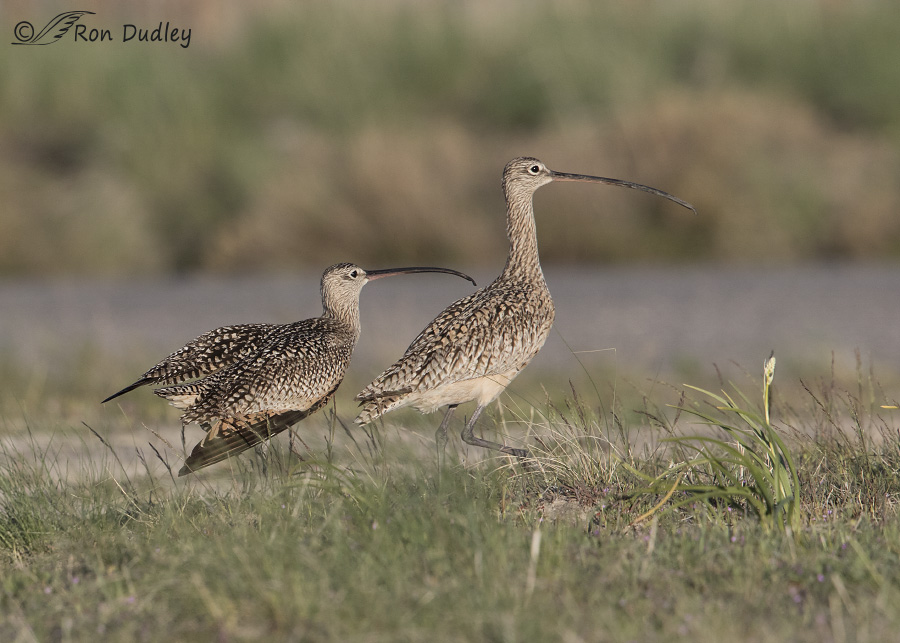
For a few moments the female played hard to get and walked slowly away from him as he continued to stroke her back as he followed.
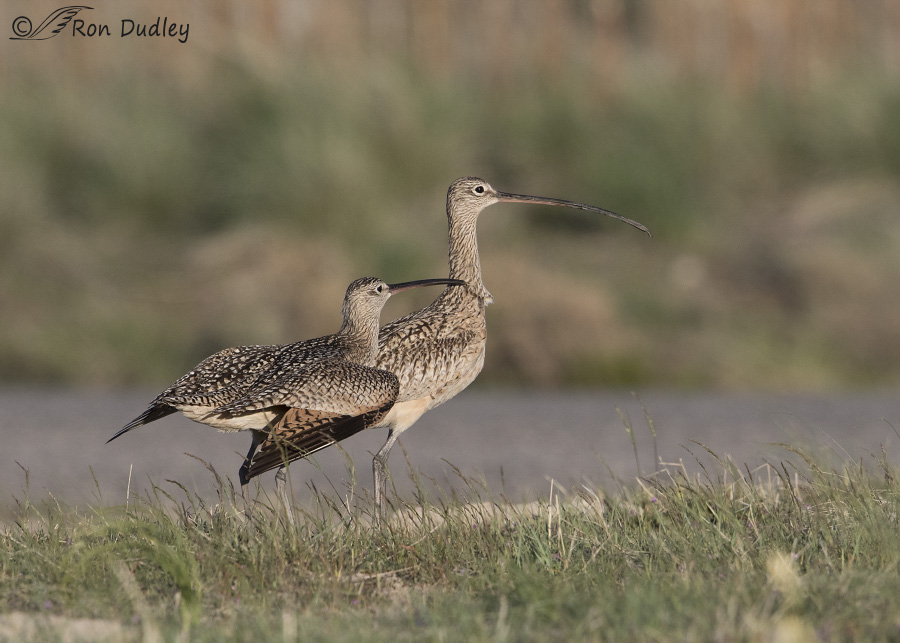
But then she stopped and allowed him to stroke her long neck.
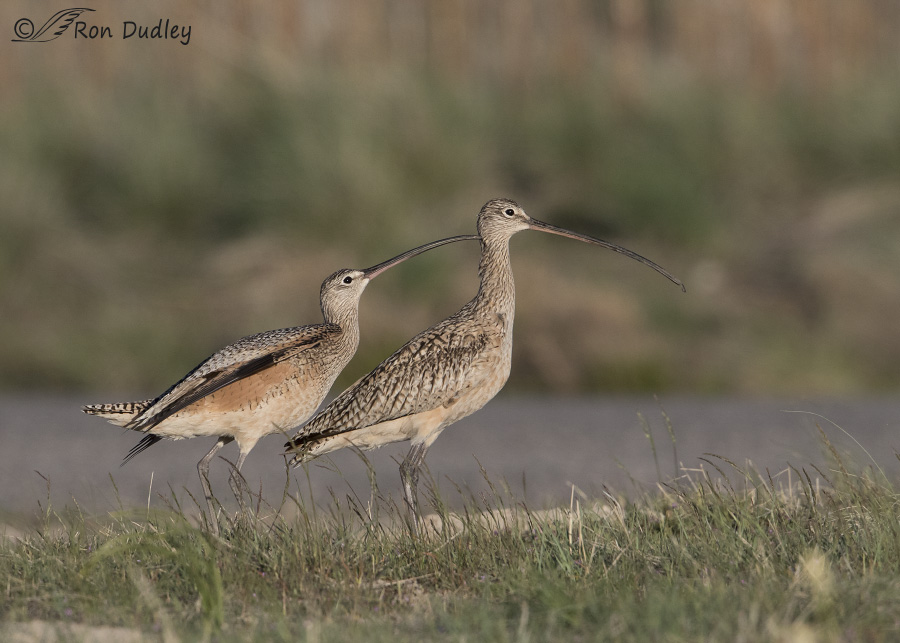
He stroked her neck on both sides and from top to bottom.
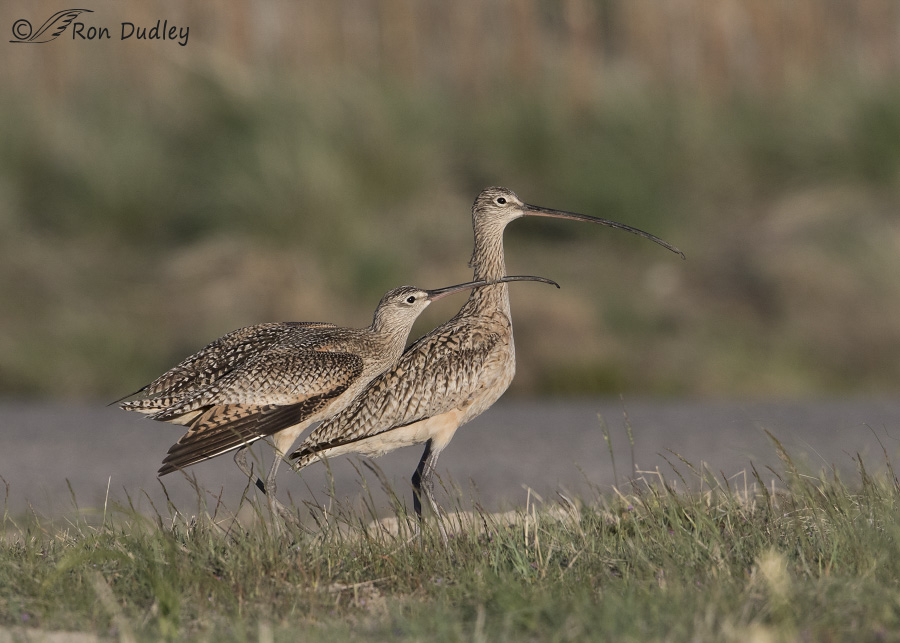
This “bill stroking” behavior lasted for about three minutes.
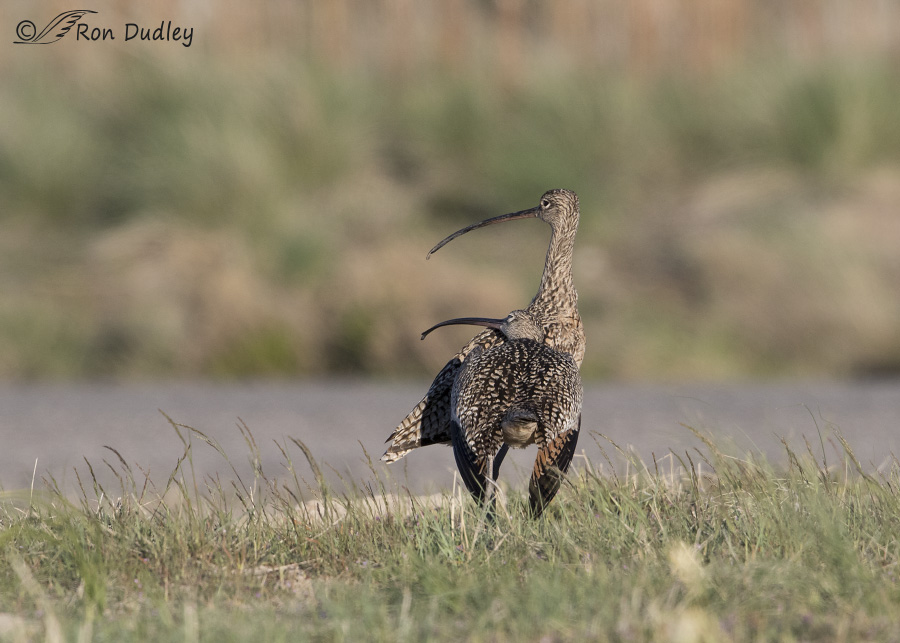
In a particularly tender moment he laid his head on her upper back.
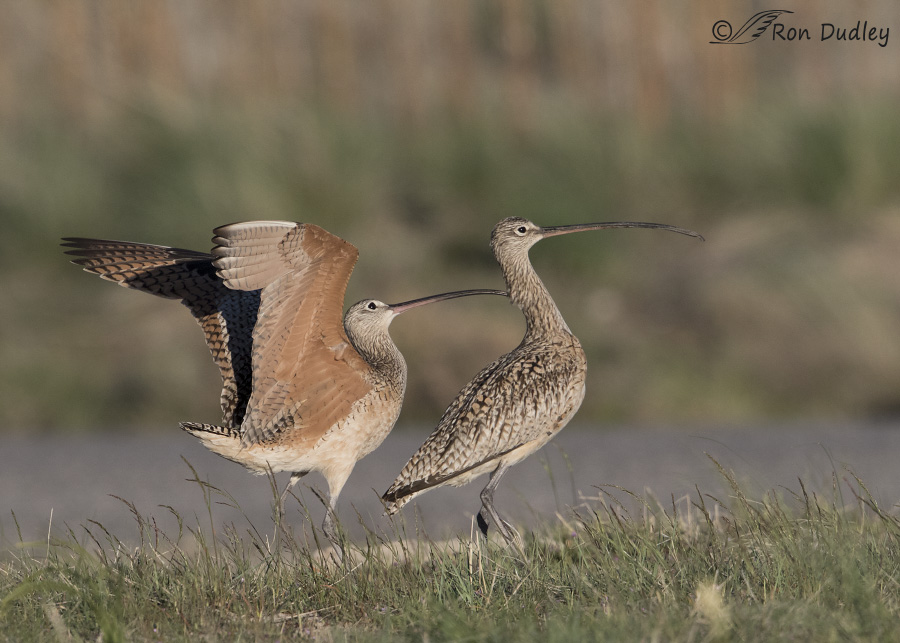
At one point he grabbed some of her neck feathers with the tip of his bill and pulled her head and neck backward.
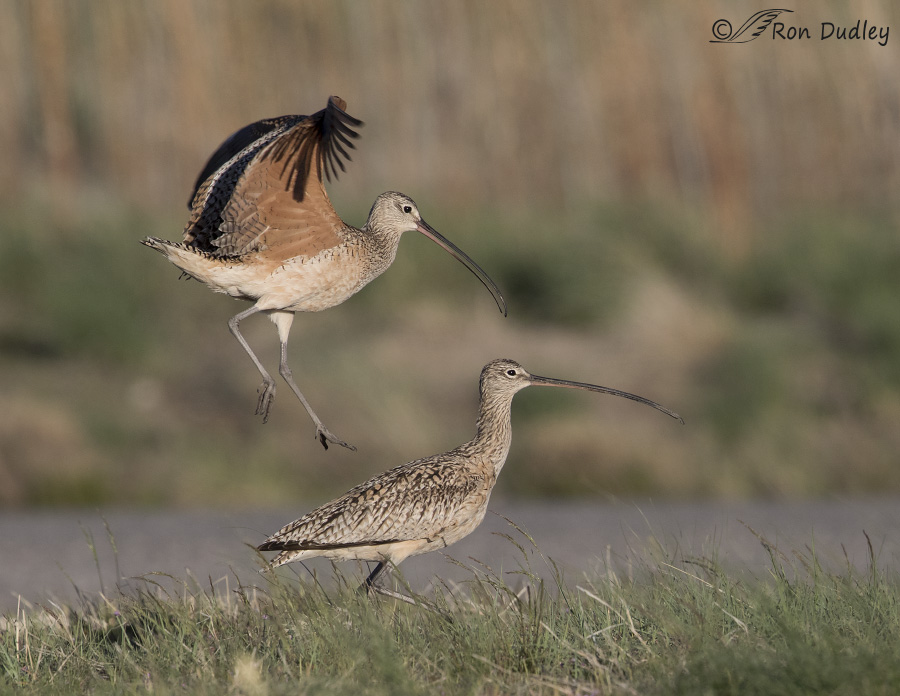
Suddenly he attempted to mount her…
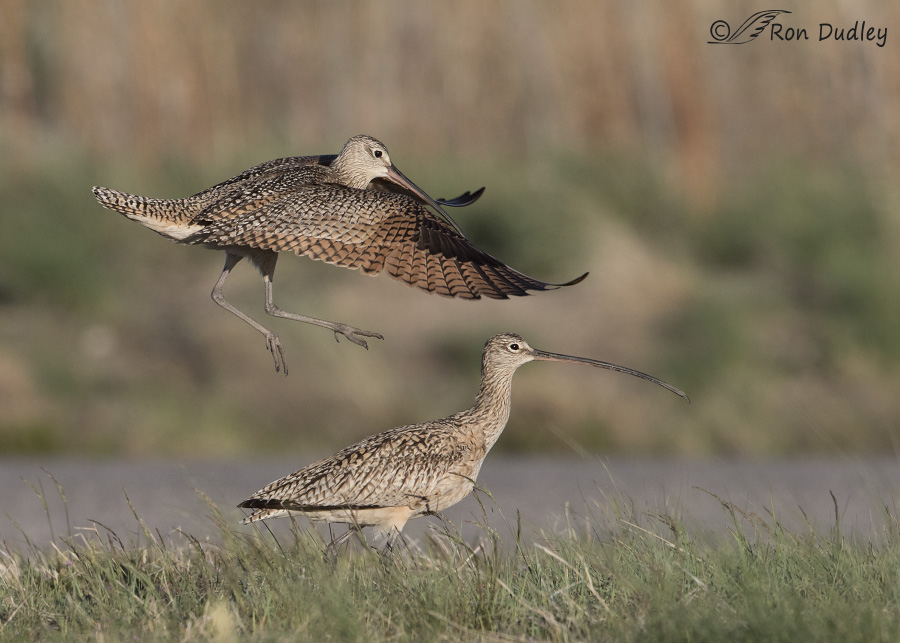
but she started walking forward again…
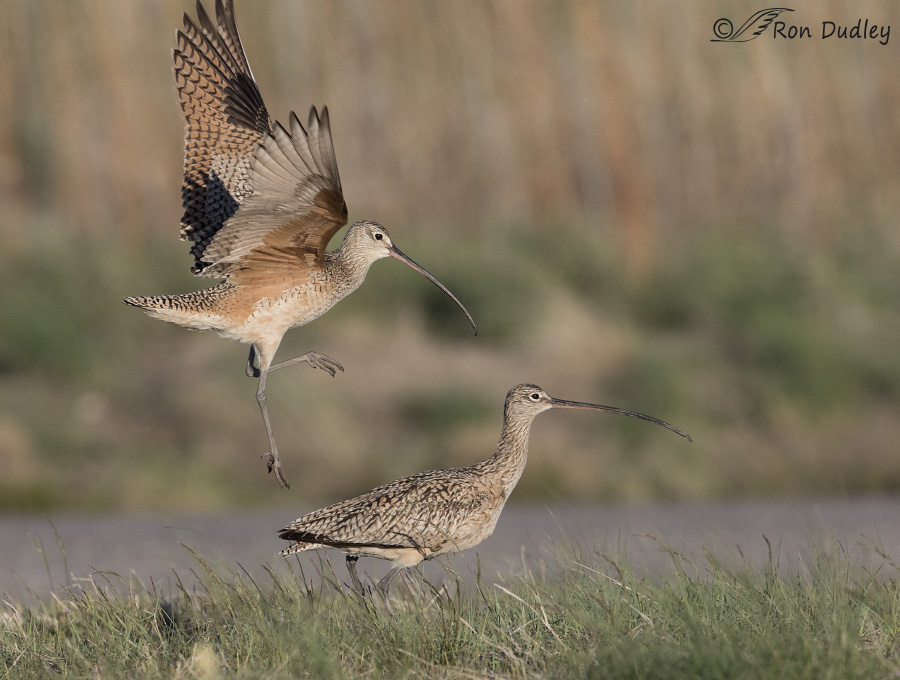
which gave him an unstable landing platform…
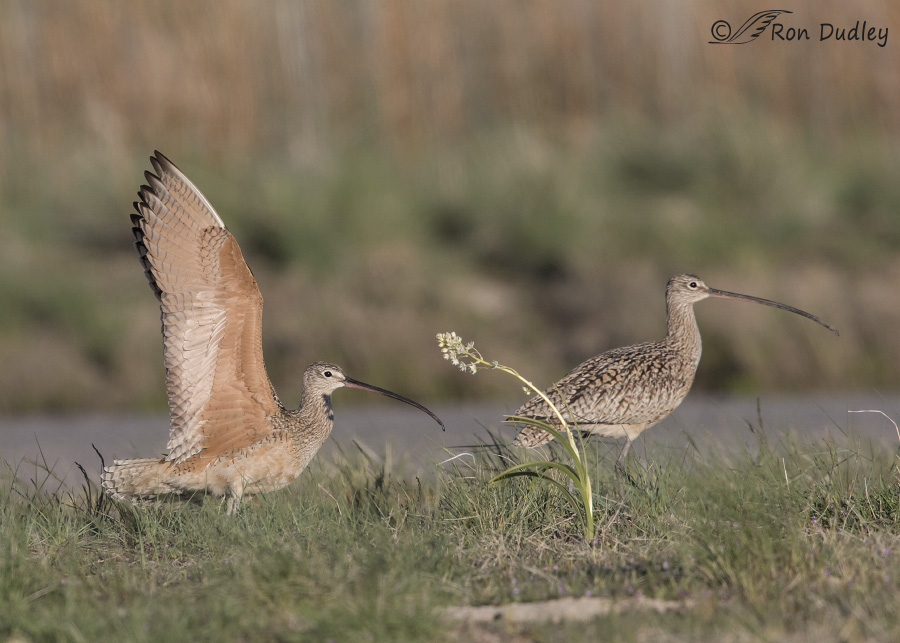
so he gave up, landed behind her and held his wings up in apparent frustration.
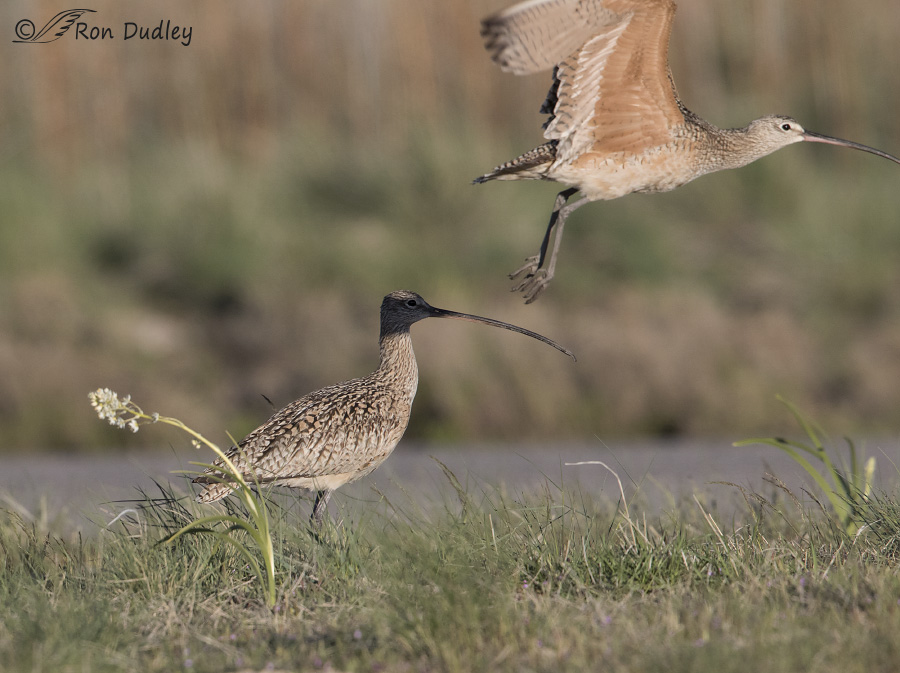
And then he simply flew away.
So much for the best laid plans of mice and men. And male Long-billed Curlews…
Ron
Notes:
- Camera techs for these images were: 1/2500 – 4000, f/6.3 – 7.1, ISO 640, Canon 7D Mark II, Canon EF 500mm f/4L IS II USM + 1.4 tc
- All images are presented in the order they were taken.
- The 20 images in this post were a new record for me. I hope that didn’t cause any loading problems for readers.


The last made me laugh. 😀
Marvelous behavioral shots Ron!
Charlotte
Great series, Ron! I’m always amazed at the mating process. So, are the curlews monogamous? According to Cornell, the female abandons the brood after 2-3 weeks, and leaves the care to the male. 🙂 Then, it says that the same pair often mate again the nest year. Makes me wonder what is going on here. Maybe the female thought one brood was enough! 🙂 Great images!!
Jane, Yes, they’re monogamous. Thank you.
Fascinating series and beautifully captured. Wonderful narrative to accompany the photos as well. Thanks
Thanks on both counts, Larry
Hahahaha. I see no difference with human behavior. Male and female long-billed curlews, too, come from different planets. Foreplay is necessary for female curlews, but not sufficient. In love, there are no guarantees.
“I see no difference with human behavior”
There are some real parallels, aren’t there, Ricardo? No guarantees indeed!
I suspect that a rewrite of the last caption might be something like, “Duck you! “…or something similar if you weren’t such a gentleman…. 🙂
It isn’t every day that I’m referred to as a gentleman, Patty…
Spectacular series, Ron. I’ve only seen Curlews on their wintering grounds, so this sneak peek into their courtship display is an unexpected delight. Thank you!
I’m glad you enjoyed the series, Diane. Thanks.
Well…those pictures tell quite a story. I am so resisting the urge to add my own little comments to each photo. I did them in my head though!!
Loved this series, so beautiful!!
Yep, my mind went lots of places that I didn’t let my narration go to when I was composing the text, Carol. My real sense of humor (and vocabulary) often aren’t appropriate for public consumption…
I guess that poor male just doesn’t understand what “No!” means….
I felt sorry for him, Patty. I think the female was giving him mixed signals.
oops, double dipping
I’m having as much problem as the Curlew 😉
Need coffee
No problem, David. I deleted the repeated comment. And I understand that coffee thing – this morning, with only a half cup of coffee under my belt, I hit a wrong button and deleted my entire post while I was working on it…
Ron, thanks for the great photos & the narration which was a fun start to the morning.
And no problems downloading
“And no problems downloading”
Good, thanks for that feedback, David. I always worry about that with these large posts and file sizes.
Just an extraordinary “capture”, Ron–I’m glad that you had much more success for your persistence than the male curlew !
Ha, me too, Kris. I felt for him…
Great series, fun to read and look at.
I am sure with the independent lives that Curlews normally lead it takes a bit of coaxing for the mating ritual to develop into a pair bond.
There certainly are some enjoyable captions with your shots!
Did you see any nesting activity nearby?
“Did you see any nesting activity nearby?”
No, I didn’t, Dick. They generally nest in different areas than they feed. Nests are hidden in long grasses but they feed in more open areas. And those nests are so well hidden that I’ve never even seen one of them. I only see the chicks after they have left the nest, which is almost immediately after hatching.
Fascinating sequence Ron! I wonder if there is a curlew expert out there who would love to see these amazing images?
I have no idea, Ed. If there is he/she may stumble upon them eventually. Thank you.
Fabulous behavioral study.
Thank you, Marilyn.
Wonderful series, Ron! We didn’t see any action among them even when they were still around here, usually in wheat fields before ripening. It’s a real treat to see both the photo’s and narration. 🙂
Judy, Curlews nest on the island so they’ll be around for a while. I look forward to seeing and photographing their chicks.
What an absolutely neat series! Thank you! Your comments were fun. And with a bird we rarely see in the NE.
Thank you, Richard. I’m glad you enjoyed my narration too.